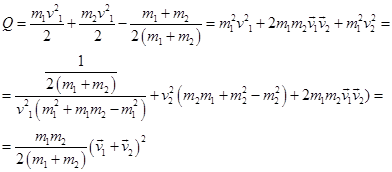main
To the list of lectures
|
VIII The law of conservation of energy.
W = const.
LCE.for dissipative systems (not conservative systems):
ΔW = AFdiss In the case of the dissipative forces are converting mechanical energy into other forms of energy (with the force of friction - in the heat: contact body heat). However, if any transformations, energy conversions performed universal natural law - the law of conservation of energy: energy can change from one form to another, and redistributed within the system, but its total in a closed system must remain constant. If the system is not closed, then the change of its energy in the interaction with the environment is equal to the energy that the system receives from the outside.
IX. Is elastic and inelastic collisions.
Problem is usually stated as follows: the known momentum and energy bodies before the collision to determine the values of these quantities after the collision. There are two extreme types of stroke: a completely elastic and completely inelastic.
L.C.M.:
x:
L.C.E.:
Application: m1 = m2, then ie body exchange speed. 2) Hit the ball on the massive wall.
Speed after the impact of the massive body changes slightly. As a result of hitting the wall from the increase in momentum, a relatively small amount of energy
L.C.M.:
L.C.E.:
If then
If m2 >> m1, then u << v1 and almost all WK1 striker converted into heat.
At absolutely elastic collision u1 - u2 = - (v1 - v2), ie relative speed of the balls after the collision is equal in magnitude and direction opposite to their relative velocity before impact. When completely inelastic collision the relative velocity after the collision is equal to 0, because u1 = u2 = u. When partially inelastic collision the relative velocity after the collision is equal to a percentage of the relative velocity before impact
where ε (0 ≤ ε ≤ 1), the coefficient of restitution of the relative velocity at impact. When you hit a steel balls ε = 0,9; balls of ivory ε = 0.89; for lead ε = 0,2; glass ε = 0.95.
The average power is the ratio of work for the entire period of time during which the work is performed
|



